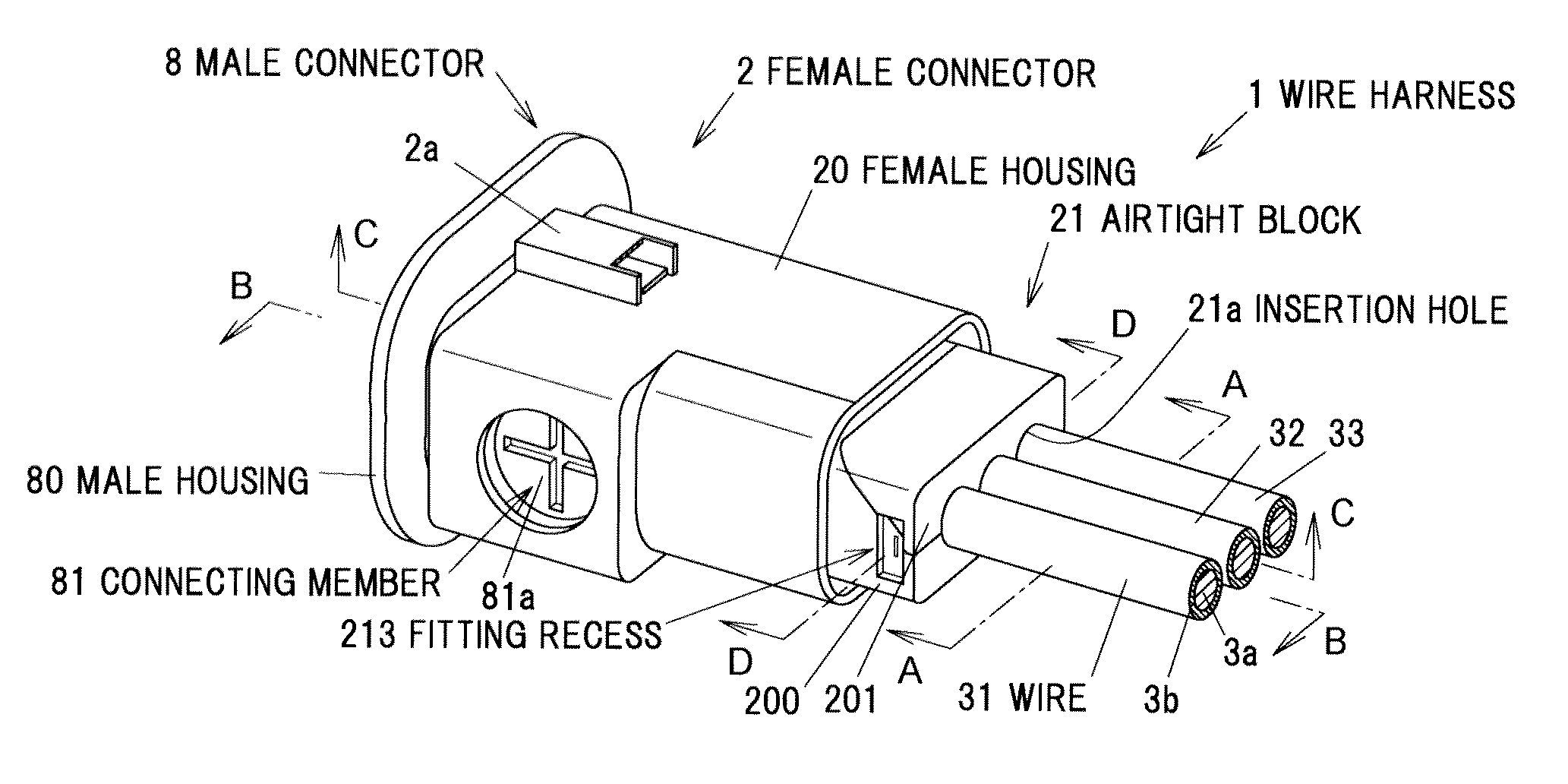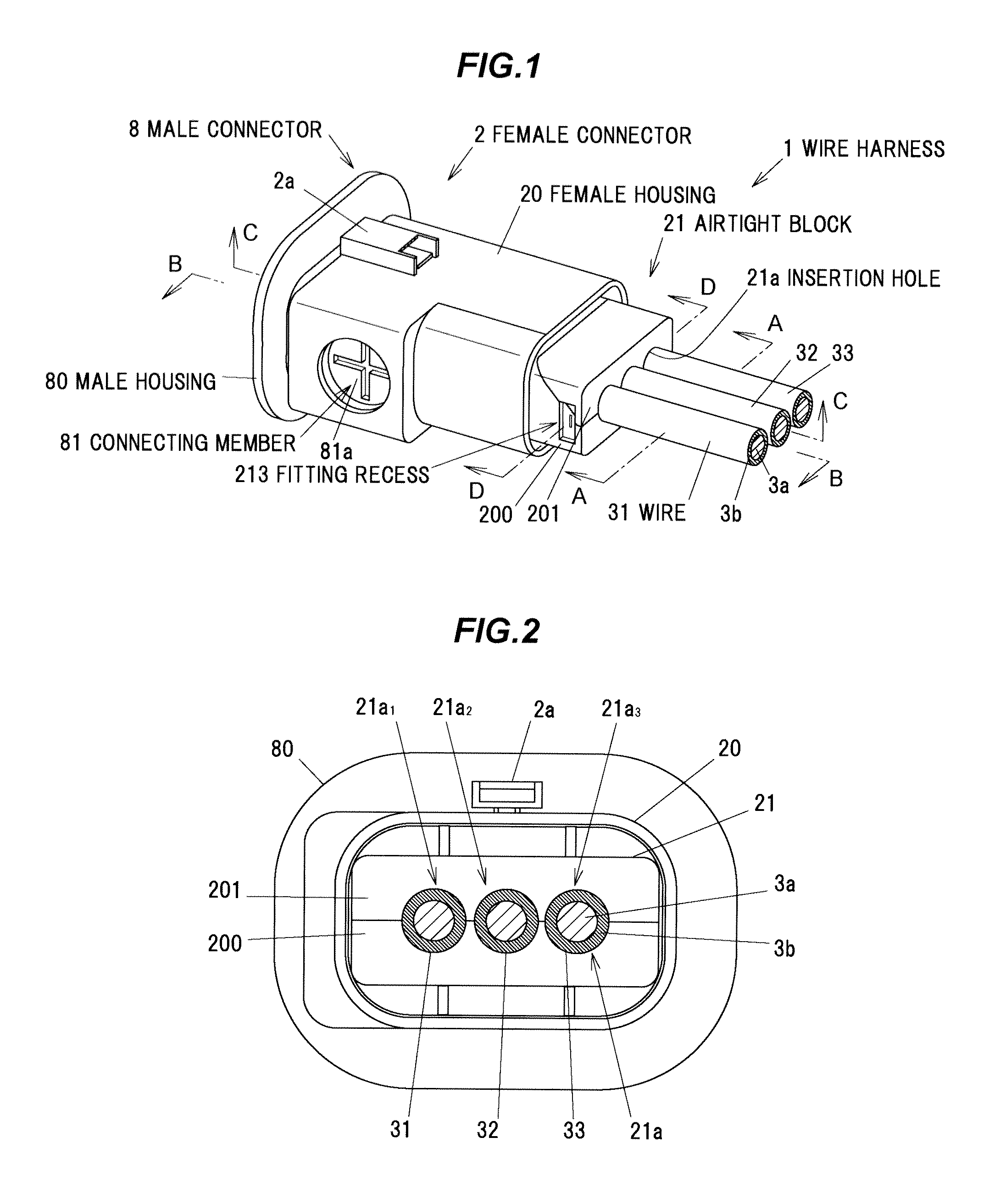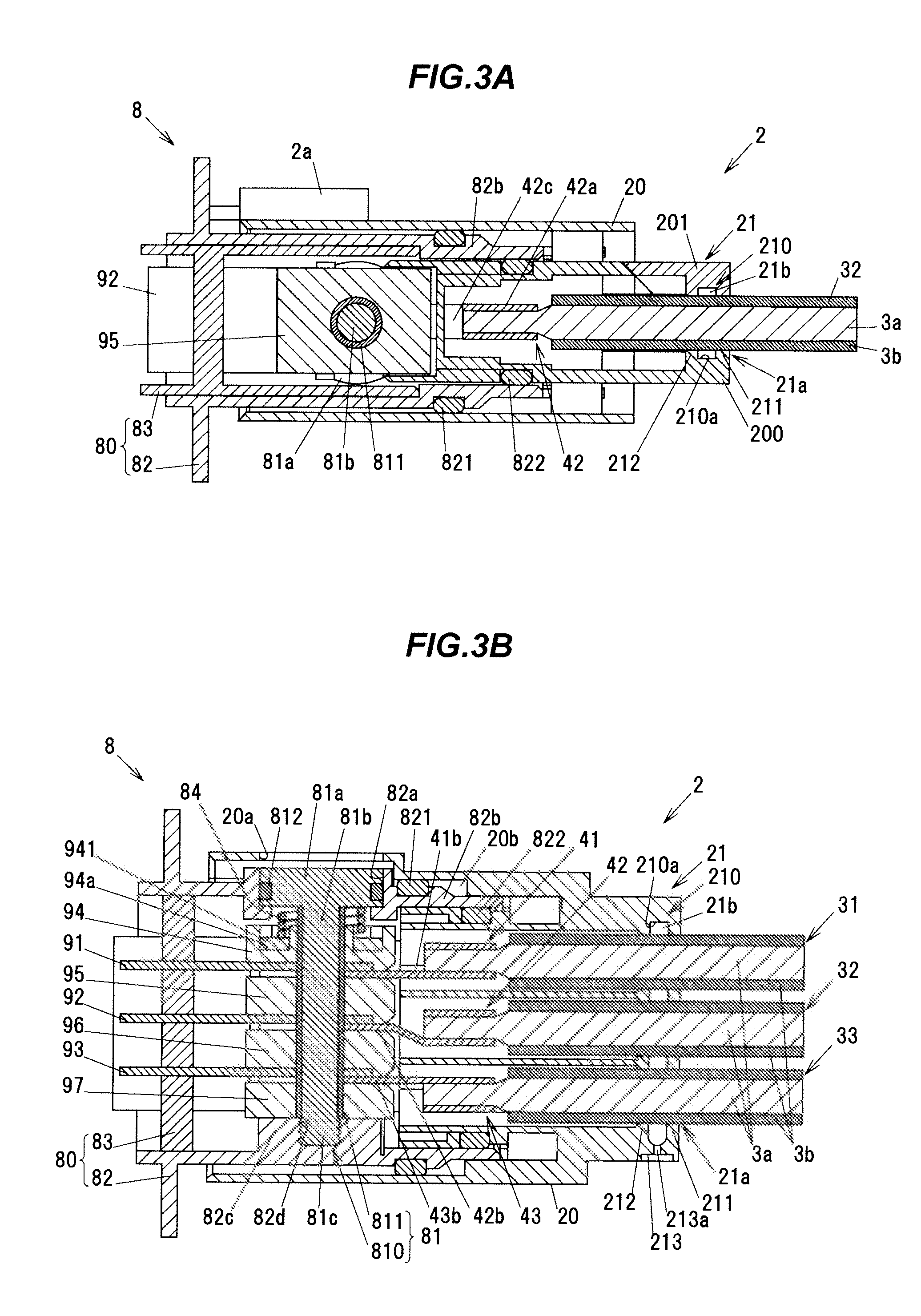Method of manufacturing wire harness
a manufacturing method and wire harness technology, applied in the direction of electrical equipment, line/current collector details, coupling device connections, etc., can solve the problem of design restrictions
- Summary
- Abstract
- Description
- Claims
- Application Information
AI Technical Summary
Benefits of technology
Problems solved by technology
Method used
Image
Examples
first embodiment
[0048]FIG. 1 is a perspective view showing a wire harness in a first embodiment of the invention FIG. 2 is a cross sectional view taken along a line A-A in FIG. 1. A wire harness 1 is used for supplying a driving current to, e.g., an electric motor as a drive source of a vehicle.
[0049]The wire harness 1 has a female connector 2 and three wires 31 to 33. The female connector 2 has a female housing 20 for holding end portions of the wires 31 to 33. The three wires 31 to 33 are aligned in one direction and are held by the female housing 20. The female housing 20 is formed of a resin, e.g., PPS (polyphenylene sulfide) resin, PPA (polyphthalamide) resin, PA (polyamide) resin or PBT (polybutylene terephthalate) resin, etc.
[0050]The female housing 20 has, at an end portion thereof from which the wires 31 to 33 are led out, an airtight block 21 formed of a resin in which an insertion hole 21a for inserting the wires 31 to 33 is formed. Meanwhile, a fitting recess 213 for fitting a below-des...
second embodiment
[0126]Next, the second embodiment of the invention will be described in reference to FIGS. 16A and 16B.
[0127]FIGS. 16A and 16B are diagrams illustrating a melting tool 5A and a resin member 6A in a second embodiment, wherein FIG. 16A is a plan view and FIG. 16B is a cross sectional view taken along a line H-H in FIG. 16A. An outline of the columnar resin member 6A inserted into the melting tool 5A is indicated by a chain double-dashed line in FIG. 16A, and FIG. 16B shows a cross section along the center axis C of the resin member 6A. The melting tool 5A is attached to the airtight block 21 of the female housing 20 and supplies a molten resin to the space 21b of the airtight block 21 in the same manner as the melting tool 5 in the first embodiment.
[0128]The melting tool 5A is formed of a metal, e.g., iron, stainless steel or aluminum, etc., and integrally includes a main body 53 and a protruding portion 54. The melting tool 5A has an insertion hole 531 for inserting the resin member ...
PUM
| Property | Measurement | Unit |
|---|---|---|
| distance | aaaaa | aaaaa |
| temperature | aaaaa | aaaaa |
| angle | aaaaa | aaaaa |
Abstract
Description
Claims
Application Information
 Login to View More
Login to View More - R&D
- Intellectual Property
- Life Sciences
- Materials
- Tech Scout
- Unparalleled Data Quality
- Higher Quality Content
- 60% Fewer Hallucinations
Browse by: Latest US Patents, China's latest patents, Technical Efficacy Thesaurus, Application Domain, Technology Topic, Popular Technical Reports.
© 2025 PatSnap. All rights reserved.Legal|Privacy policy|Modern Slavery Act Transparency Statement|Sitemap|About US| Contact US: help@patsnap.com



